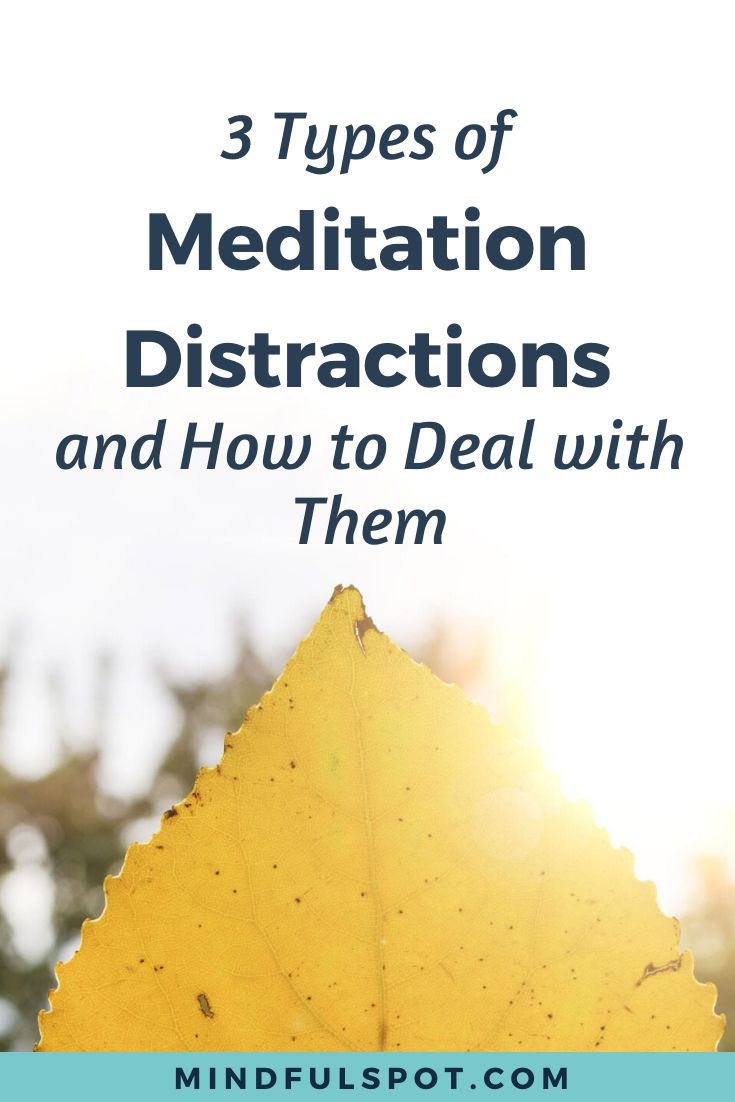Sometimes, it can be hard for you to meditate even for three minutes. There are many factors that cause this, but the most prominent among them are irritating noises, physical discomfort, and distracting thoughts. What you may not realize at first is that all these meditation distractions can become a part of the process, and you can learn to be comfortable with them.
I went through that stage myself. Looking back, all I can remember is irritation and disappointment. Prolonged sitting caused physical distress and stirred memories from my past that I learned to push away, and it wasn’t what I wanted. But in the end, it did help me let go of negative thoughts that were burdening my mind.
Meditation allowed me to observe my thoughts without judgment, and I was able to focus on the now, the only thing that truly mattered. In this article, I would like to share the three most common meditation distractions and how you can deal with them.
1. Irritating Noises

I’m a part of a meditation group, and one day a member posted a question on behalf of a friend who lived in a noisy household. This friend wanted to meditate, but outside noises interfered with his concentration. So he wanted to know what he should do about it. The right answer to that question is twofold.
First, you have to take the right action. Do whatever you can to find a quiet place. However, sometimes it’s easier said than done.

FREE Self-Test: How Spiritual Are You?
If there is no practical way to get rid of the distracting sound, you need to get comfortable with it. You should observe your internal reactions and let them uncover your habitual thought patterns.
As you practice more, you might notice that the noise doesn’t really bother you anymore. So whether you meditate in total silence or with irritating noises won’t make any difference.
2. Physical Discomfort

Even if you try to sit still, you might find that your body wants to move, and on top of that, the whole process seems like forever because time has slowed down, almost stopped.
In my experience, this irritating feeling can be linked to physical discomfort. One way to deal with this meditation distraction is to adjust your sitting meditation posture.
For example, you might start with a cross-legged position on the floor. I do not recommend this approach because it does more harm than good. If you’re not flexible enough, you might feel tense and uneasy.
The best option is to sit on a chair, placing feet firmly on the ground. This way, you can keep your body relaxed, and your mind alert for meditation.
Related article: “3 Relaxing Meditation Postures for Beginners”
3. Distracting Thoughts

Sometimes, it seems impossible to keep out distracting thoughts when you meditate. Only a few minutes into meditation and a random image from your past shatters your concentration.
And when that happens, you blame yourself for not being able to meditate the right way. If you ever felt that way, then you had been doing everything right. Becoming aware of your thoughts is one of the main benefits of meditation.
For example, when you count your out-breaths during breathing meditation and get distracted, you have to start all over again. Only then can you move on to the next stage of the technique. In the long run, this repetition helps you to let go of thoughts and go back to your breath.
You learn to “catch” your thoughts, becoming aware of something that was unconscious. So there are two components at work here: you notice that you are being distracted by a thought, and you go back to your breath.
Related article: “How to Practice Breathing Meditation in 4 Easy Steps”
In Conclusion
The moment you notice the distraction is the moment you create a small gap between you and your thoughts. That gap means that you can “see” the thought from a distance.
You break your identification with it. You become the observer. This gap is tiny at first, but with time it expands, and your concentration improves. It becomes much easier to follow your breath and come back to it whenever you want.

FREE mindfulness resources for stress relief
This practice profoundly changes your everyday life. Even when not meditating, you can catch yourself thinking negative thoughts. Your awareness grows, and with it, your ability to remain calm and take the right action.

I’m a freelance writer and mindfulness advocate behind this blog. I started my meditation practice in 2014, and in 2017 I launched this website to share what I learn with others. Here are the three things you can do here:
1. Schedule a free consult if you want to learn Buddhist meditation.
2. Download free mindfulness resources for stress relief
3. Join Patreon for exclusive content and community meetings.








